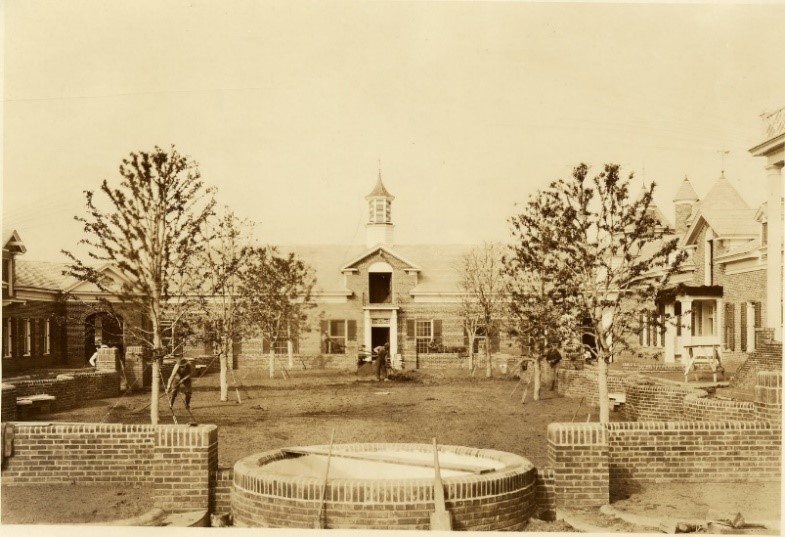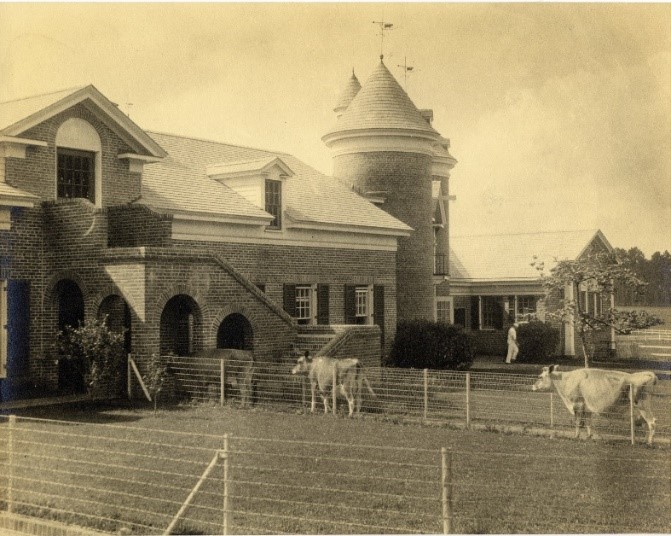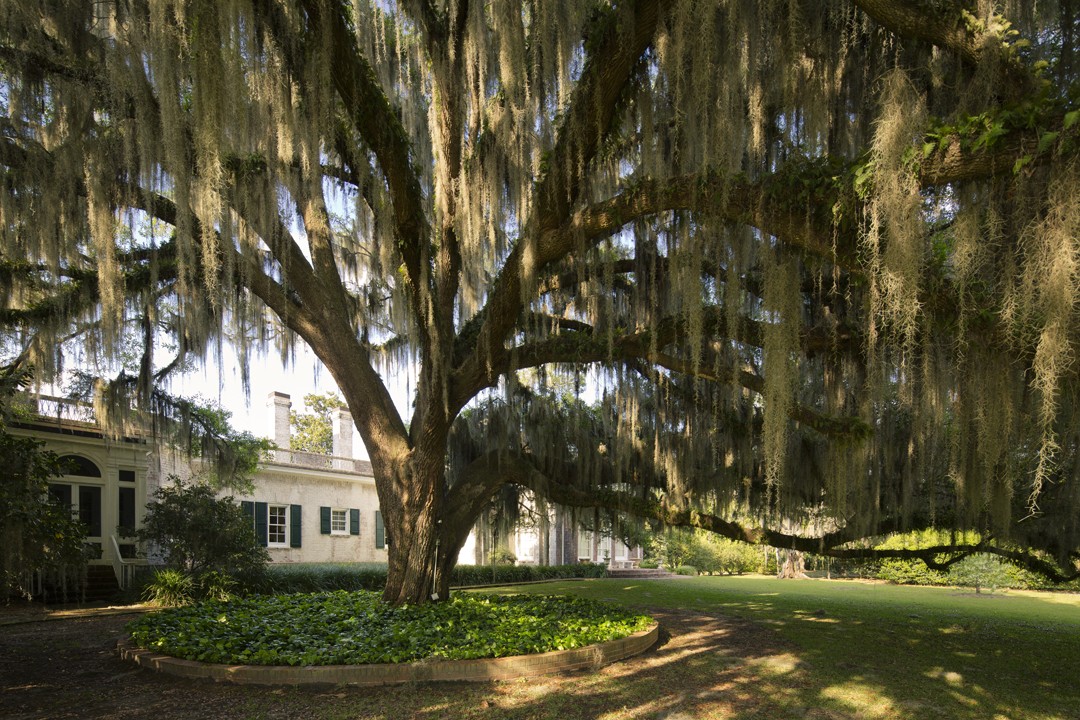Stop #12
Stable Complex
Designed in 1928 by Abram Garfield, the Stable Complex was home to Mrs. Harvey’s prized Jersey herd. From 1928 to 1936, dairy shows and auctions were held in the center courtyard. Most of the complex was altered to accommodate horses following Mrs. Harvey’s death. The Stable Complex includes a carriage room, tack room, cow barn, milking barn, and horse stalls. Today the complex provides space for a variety of activities including museum programming, receptions, and other special events.
*Plantings included in Miss Harrison’s master plan
 Native plant
Native plant
Burford Holly
Ilex cornuta ‘Burfordii’
This towering broadleaf native evergreen holly produces small red berries in late fall and winter. This specimen has beautiful light gray bark and stiff leaves with curved edges and spike-like points. The Burford holly flowers are attractive to a variety of insects, and the berries are an important winter food source for birds and mammals. Holly cuttings have always been used in holiday decorating at Pebble Hill.
Ligustrum
Ligustrum japonicum
This evergreen large shrub or small tree can grow 20 to 30 feet tall and has glossy, dark green leaves. Ligustrums produce clusters of small, creamy white flowers with a pungent fragrance that bloom in spring to early summer.
Live Oak*
Quercus virginiana
Evergreen live oak trees are found throughout the plantation, frequently draped in Spanish moss. Although this tree is evergreen, it does drop older leaves in the springtime and replenishes with new leaf growth. It can grow to 60 to 80 feet in height and can have a 60 to 12 foot spread with curved branches and trunks. The live oak is the state tree of Georgia.

Stable Courtyard circa 1930s
Pittosporum
Pittosporum tobira
This evergreen shrub with oval leaves secretes a sap-like substance when cut or squeezed. With fragrant white flower clusters that bloom in the spring, pittosporum can grow up to 30 feet tall and 10 feet wide. These shrubs are used throughout the world as ornamental plants in landscaping and as cut foliage.
Resurrection Fern
Pleopeltis polypodioides
Typically found on massive live oak limbs, this native delicate evergreen fern turns green with excessive moisture. When the weather is dry for extended periods, the fern turns brown and shrivels, then “resurrects” once enough moisture returns. The fronds are known as air plants or epiphyte and draw nutrients from air and water that collect on the outer surfaces of bark.

Exterior Stable Complex circa 1930s
